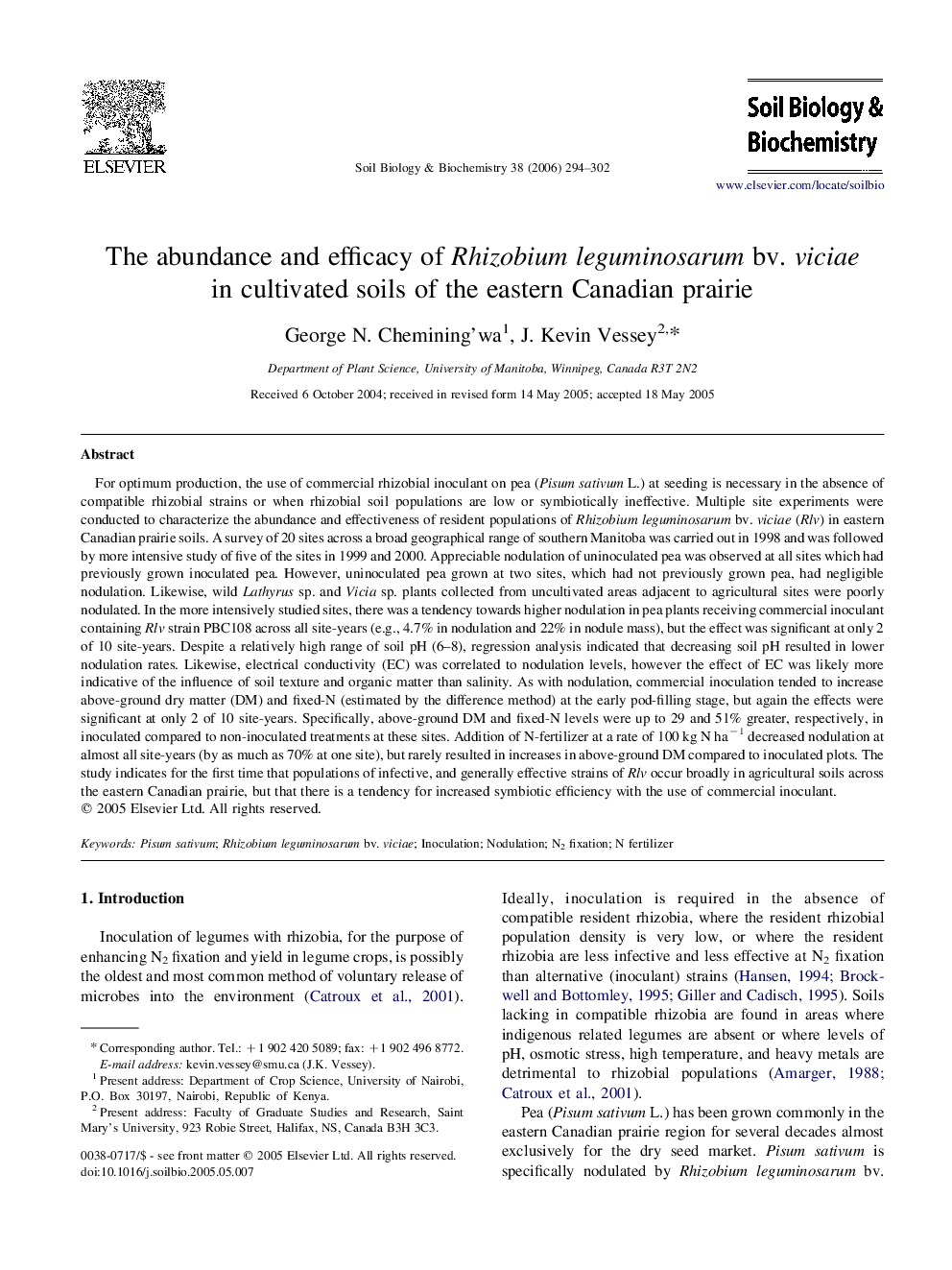| Article ID | Journal | Published Year | Pages | File Type |
|---|---|---|---|---|
| 2026780 | Soil Biology and Biochemistry | 2006 | 9 Pages |
For optimum production, the use of commercial rhizobial inoculant on pea (Pisum sativum L.) at seeding is necessary in the absence of compatible rhizobial strains or when rhizobial soil populations are low or symbiotically ineffective. Multiple site experiments were conducted to characterize the abundance and effectiveness of resident populations of Rhizobium leguminosarum bv. viciae (Rlv) in eastern Canadian prairie soils. A survey of 20 sites across a broad geographical range of southern Manitoba was carried out in 1998 and was followed by more intensive study of five of the sites in 1999 and 2000. Appreciable nodulation of uninoculated pea was observed at all sites which had previously grown inoculated pea. However, uninoculated pea grown at two sites, which had not previously grown pea, had negligible nodulation. Likewise, wild Lathyrus sp. and Vicia sp. plants collected from uncultivated areas adjacent to agricultural sites were poorly nodulated. In the more intensively studied sites, there was a tendency towards higher nodulation in pea plants receiving commercial inoculant containing Rlv strain PBC108 across all site-years (e.g., 4.7% in nodulation and 22% in nodule mass), but the effect was significant at only 2 of 10 site-years. Despite a relatively high range of soil pH (6–8), regression analysis indicated that decreasing soil pH resulted in lower nodulation rates. Likewise, electrical conductivity (EC) was correlated to nodulation levels, however the effect of EC was likely more indicative of the influence of soil texture and organic matter than salinity. As with nodulation, commercial inoculation tended to increase above-ground dry matter (DM) and fixed-N (estimated by the difference method) at the early pod-filling stage, but again the effects were significant at only 2 of 10 site-years. Specifically, above-ground DM and fixed-N levels were up to 29 and 51% greater, respectively, in inoculated compared to non-inoculated treatments at these sites. Addition of N-fertilizer at a rate of 100 kg N ha−1 decreased nodulation at almost all site-years (by as much as 70% at one site), but rarely resulted in increases in above-ground DM compared to inoculated plots. The study indicates for the first time that populations of infective, and generally effective strains of Rlv occur broadly in agricultural soils across the eastern Canadian prairie, but that there is a tendency for increased symbiotic efficiency with the use of commercial inoculant.
